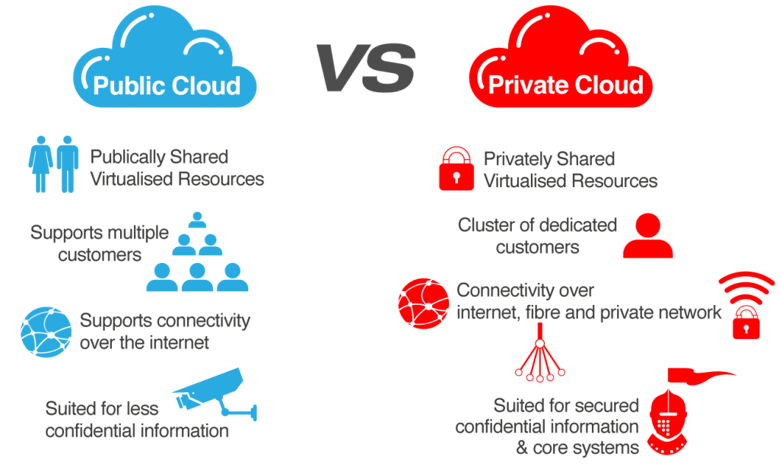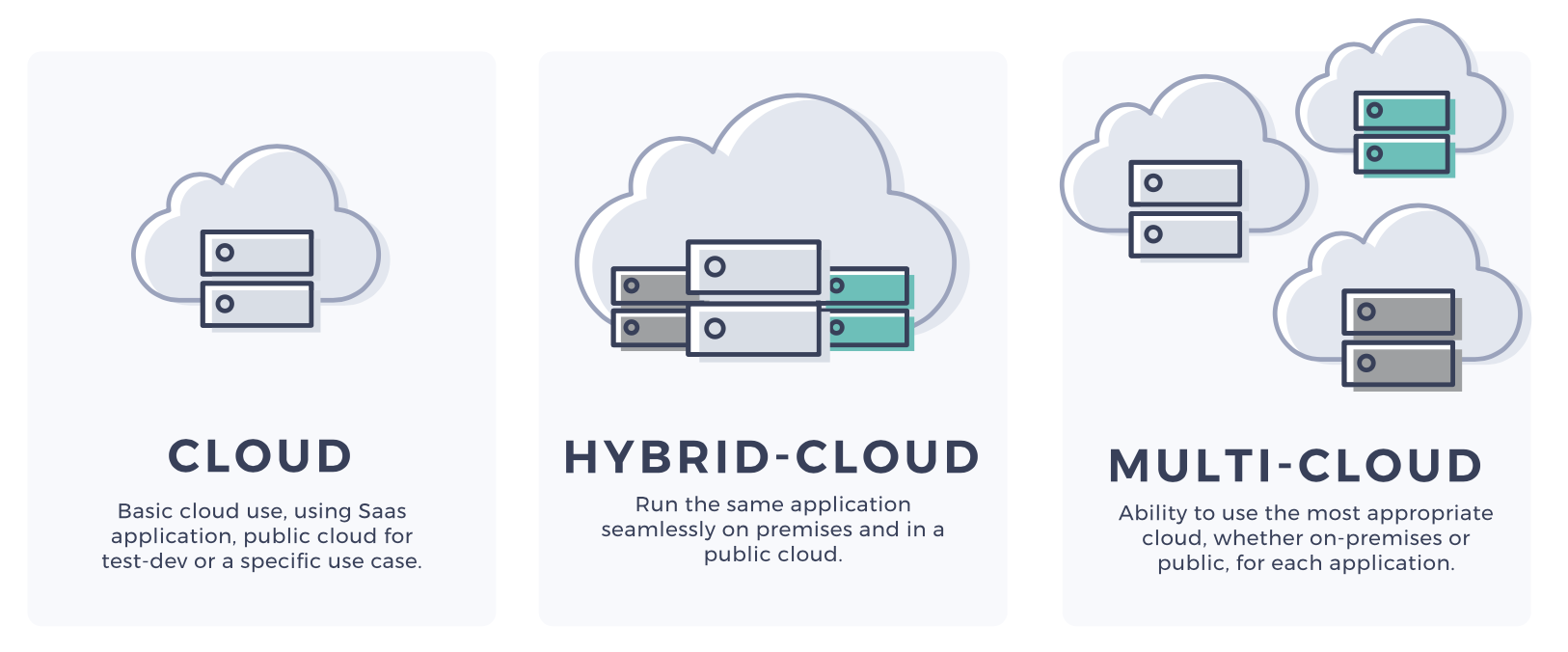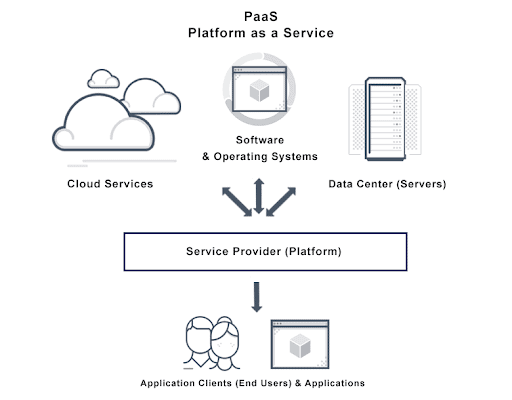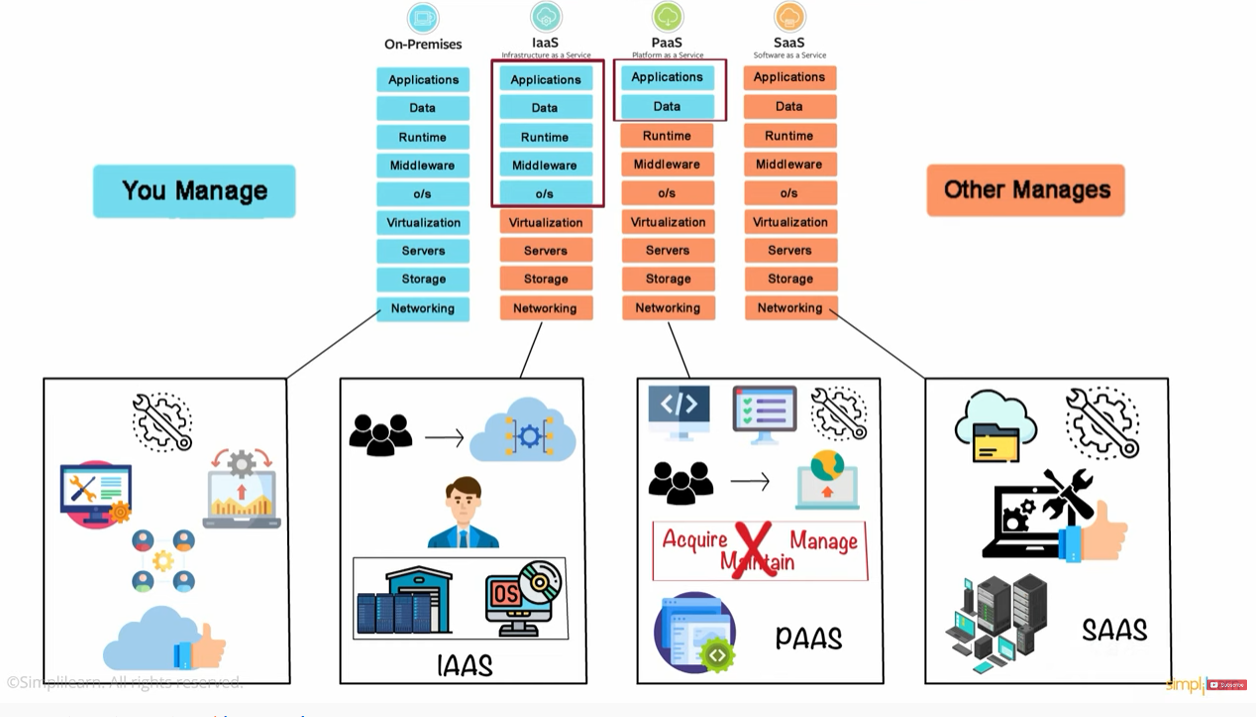Today's business world is undergoing intense digital transformation and constantly changing. Data has become an organization's most valuable commodity. Data storage, analysis and accessibility are now the most important factors contributing to the success of a business.
Organizations need to be able to access their data from computers, or mobile devices at any time, from any location. Cloud computing power makes this possible as long as there is an internet connection. The benefits for organizations who have undergone a partial or full cloud migration are plentiful. They include:
-
Reduced IT costs
-
Unlimited scalability
-
Better business continuity
-
Collaboration efficiency
-
More flexible work practices
-
Access to automatic updates
What is cloud computing?
Cloud computing resources are made possible by the delivery of on-demand computing services over the internet, on a pay-as-needed basis. Rather than managing services and files on a local storage device, this is done over the internet in a far more cost efficient way.
This means you pay only for the applications and cloud services you use. A cloud based model helps lower a business’s operating costs and enables more flexible scaling, agility and efficiency.
A little bit of history
Where did it all begin?
In 1963, DARPA (the Defense Advanced Research Projects Agency) funded MIT to develop technology that enabled a 'computer to be used by two or more people simultaneously'. The project involved developing monolithic computers using reels of magnetic tape for memory to become the predecessor to what is now known as cloud computing.
In 1969, J. C. R. Licklider, an eminent psychologist and computer scientist helped develop the ARPANET (Advanced Research Projects Agency Network), a primitive version of what is now known as the Internet, by promoting a vision called the “Intergalactic Computer Network”. This bold venture would enable everyone on the planet to be interconnected by computers, and able to access information from anywhere.
Early to late 1990s. The term “cloud” was first associated with the concept of distributed computing, made popular by the Apple-created General Magic in the early 1990s, when businesses began to realize the value of cloud computing services. In 1999, Salesforce made the early version of cloud computing successful by using the internet to deliver software programs to their end users. Anyone with internet access could download and access the program (or application). Businesses could purchase the software in an on-demand, cost-effective manner as a cloud service, from any location.
In the early 2000s, Amazon, Google, IBM and Netflix created online cloud resources that allowed the creation, storage and sharing of documents and spreadsheets, as well as the world's most popular video streaming service.
In 2007, IBM, Google, and several universities joined together to develop a 'server farm' for research projects needing both fast processors and huge data sets, they realized that computer experiments could be carried out faster and cheaper, if IBM and Google backed their research. Since much of the research was focused on problems IBM and Google had interests in, they also gained from the arrangement.
2010 and beyond. While private clouds came about in 2008, they were not very popular, but due to concerns with poor security in public cloud services, cloud infrastructure began to change to promote the use of the private cloud.
In 2011, the concept of hybrid clouds was introduced, but due to the huge amount of interoperability needed between public and private clouds, few businesses had the capabilities to utilize it.
In 2012, Oracle introduced the Oracle Cloud which created the three basic cloud based services for business, IaaS (Infrastructure-as-a-Service), PaaS (Platform-as-a-Service), and SAAS (Software-as-a-Service), the latter of which is still the most popular today.
From 2014 to the present, cloud computing has continued to develop its current features, with security as a top concern. Security has become a fast growing cloud computing service with cloud providers, because of its importance to customers. Every cloud provider prioritizes cloud security, which has advanced significantly in the last few years. Cloud computing security services include the protection of sensitive data and information from accidental deletion, theft, and data leaks.
 Image source: Cloudcomputing521
Image source: Cloudcomputing521
Types of cloud computing services
There are four main types of cloud computing: private clouds, public clouds, hybrid clouds, and multi-clouds.
 Image source: Techtarget
Image source: Techtarget
There are three basic types of cloud computing services: Infrastructure-as-a-Service (IaaS), Platforms-as-a-Service (PaaS), and Software-as-a-Service (SaaS).
Choosing a cloud type and cloud based service is a decision unique to every organization. Every cloud model is different, and no two cloud structures are used to address the same problem or requirement. But by understanding the differences and similarities between each type of cloud platform, you can make more informed decisions about how each cloud computing type and cloud service might work best for your business.
Public
This cloud model is typically an IT infrastructure that is not owned by an end user, such as Amazon Web Services (AWS), the Google Cloud Platform, Microsoft Azure, IMB Cloud etc.
A public cloud sells services to any large or small businesses with access to the internet. Initially, they were always run off-premises, however, today's public cloud service providers do offer services using on-premise data centers, rendering location and ownership obsolete.
When a cloud structure is partitioned into virtual machines, and redistributed to multiple tenants, it then becomes a public cloud structure. Tenants have the option of renting those virtual machines, or paying for additional cloud-based services such as software applications, application development tools, or cloud storage.
Public clouds are typically used for applications that don't require intense data security measures, or that may experience less predictable spikes in usage. They can also be used for data storage where frequent access isn't required.
Private
These types of cloud environments are solely dedicated to a specific end user or group, and usually operate behind that group's firewall. When the IT infrastructure is designed for specific customer access only, it then becomes a private cloud.
Infrastructures can be created from on-premise IT infrastructure or built on rented, vendor-owned data centers located off-premises. This has also led to the creation of sub-types, including:
Managed private clouds
These are deployed, configured, and managed by a third-party vendor to help enterprises that may be understaffed or have less skilled IT teams to provide better private cloud services and infrastructure.
Dedicated clouds
This sub-type is actually a cloud within another cloud, for example an accounting department could have its own dedicated cloud within their organization's private cloud.
 Image source: NetData
Image source: NetData
Hybrid cloud
A hybrid cloud model is an infrastructure created from multiple environments which are then connected through a Local Area Network (LAN), Wide Area Network (WAN), Virtual Private Network (VPNs), and/or APIs.
Hybrid cloud can be complex and can include:
-
A combination of private and public
-
Two or more private
-
Two or more public
A hybrid environment in cloud technology is defined as allowing applications to move in and out of multiple separate, but connected environments that have the ability to scale on demand. Additionally, in order to benefit the end user, a hybrid environment must be managed as a single environment using an integrated data management and orchestration system.
Read our guide
"Hybrid Cloud: What it is and how it works"
Multi-clouds
A multiple cloud approach consists of more than one cloud solution, from more than one cloud vendor, public or private. Hybrid clouds are all multi-clouds, but all multi-clouds are not necessarily hybrid clouds.
A multiple cloud environment could be used to have more control over important data or as redundant storage space for improved disaster recovery. Multiple clouds are becoming more common across organizations wanting to implement better security measures and enhanced performance.
 Image source: Xorlogics
Image source: Xorlogics
Newer forms of cloud computing models include community cloud, and big data cloud.
 Image source: Sciencedirect
Image source: Sciencedirect
Cloud-based solutions
Cloud computing consists of three basic service models:
Infrastructure as a Service (IaaS)
This allows organizations to rent their IT infrastructure, including servers, data center, virtual machines, storage and networks, from a cloud service provider, typically with pay-as-needed options. IaaS solutions allow businesses to set up environments that handle different workload needs, and are commonly associated with serverless computing. Top IaaS players are Amazon Web Services and Microsoft Azure.
 Image source: Cloudcomputingate
Image source: Cloudcomputingate
Platform as a Service (PaaS)
This is a solution where a third-party provider delivers hardware and software tools to end users. Usually, these tools are used for application development, giving software developers access to cloud-based resources like APIs, gateway software and web portals. Services like Salesforce’s Lightning, the Google App Engine and the AWS Elastic Beanstalk are popular solutions.
 Image source: Avinetworks
Image source: Avinetworks
Software as a Service (SaaS)
This provides users with access to software over the internet, accessible via a web browser, desktop client or an API. SaaS applications integrate with a user’s desktop or mobile operating system to allow users to collaborate on various projects, access and download important files and work in tandem with teams. Services like Microsoft Office 365 and Google Workspace are examples of SaaS applications.
 Image source: Simplilearn
Image source: Simplilearn
Monitoring with IR Collaborate
Every organizations needs complete visibility, accountability and full control throughout their cloud environments. Without it, every business will face obstacles that will potentially outweigh the benefits when deploying cloud solutions.
No matter which cloud solution your organization deploys, data and analytics are a vital factor in understanding how systems are performing within your IT infrastructure.
IR Collaborate provides the monitoring and performance management tools to allow complete visibility across every level of your cloud ecosystem. This provides several layers of actionable intelligence and insights that have many benefits, including analytics that can reveal end user performance to help you create team cohesion, more effective cost management, innovation, and growth.
Find out how IR Collaborate can help make your hybrid cloud environment foolproof.



